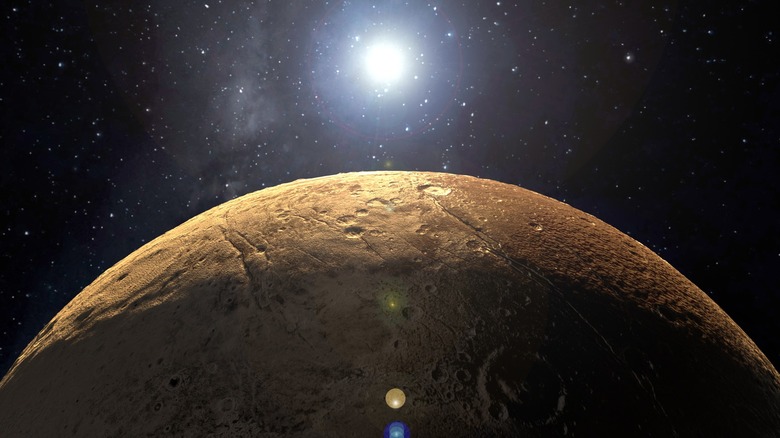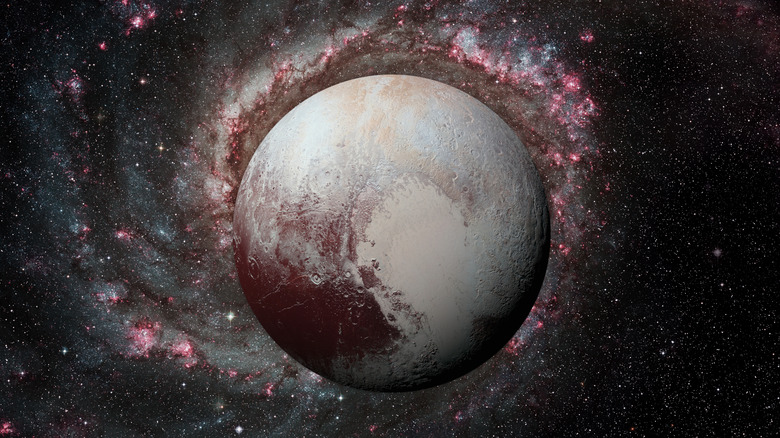Why Is Pluto Not A Planet Anymore?
In 1930, scientists discovered a small celestial body on the outer edge of our solar system. They called it Pluto and classified it as a planet. However, the International Astronomical Union (IAU) — an organization tasked with classifying objects in space — eventually revoked this classification after a vote in 2006, effectively demoting the astronomical body to a dwarf planet. Despite widespread disapproval of the change, the IAU has some sound, scientific reasons for doing it.
As it turns out, the demotion of Pluto to a dwarf planet was the result of the IAU members defining the term "planet" to be an object that orbits a star and has enough gravity to morph into a sphere and clear its neighborhood of debris and other objects. This definition applies to the four rocky bodies of the inner solar system — Mercury, Venus, Earth, and Mars — and the four gas giants in the outer solar system — Jupiter, Saturn, Uranus, and Neptune. Although Pluto is big enough to have morphed into a sphere, its gravitational force isn't strong enough to have cleared a path for itself through the Kuiper Belt.
Aside from this designation there are other big differences between Pluto and gas giant planets, too. For instance, Pluto doesn't have the massive storms that envelop Jupiter, particularly the Great Red Spot — a colossal storm with 268-mph winds that's been raging for at least 150 years. And, while Neptune is the planet that moves the slowest along its orbital path — taking the equivalent of about 165 years to complete its orbit around the sun, Pluto takes much longer at 248 years.
What it means for Pluto to be a dwarf planet and other facts
One of the main characteristics of a dwarf planet is that its gravitational force isn't strong enough to draw in neighboring celestial debris and objects (or send them away). Because of that, Pluto can't grow larger, and, it's not the only one. Other dwarf planets in our solar system include Ceres, Haumea, Makemake, and Eris — in order of size from smallest to largest. All of these (except Ceres) are also categorized as plutoids, a designation created by the IAU for dwarf planets located beyond Neptune. Ceres isn't included in this category because it's located in the asteroid belt between Mars and Jupiter.
Despite Pluto's reclassification as a dwarf planet, it continues to fascinate researchers and space observers around the world. A few reasons include that its orbit is elliptical and has a 17-degree tilt, its surface is frozen solid, and it has five moons — more than the other dwarf planets. The largest moon is Charon — the unexpected place where water was found beyond Earth. The most interesting thing about Pluto and Charon, though, is that they orbit each other.

